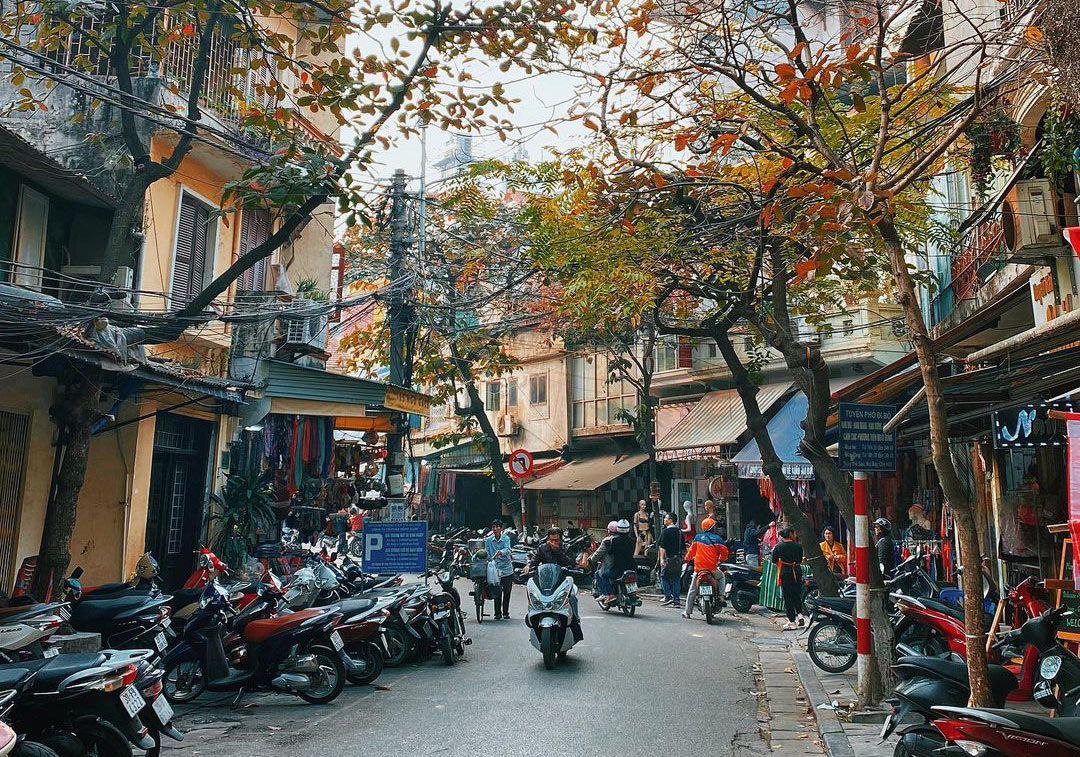Discover Hanoi Old Quarter – A Timeless Treasure at Léman’s Doorstep
Hanoi’s Old Quarter with its 36 streets has long been a cultural and historical icon of the capital. It preserves the city’s heritage in every tiled roof, moss-covered wall, and daily rhythm of local life. Each street and house tells a story of history, resilience, and the cultural essence refined over centuries.
Historical Origins

The Old Quarter dates back to the 11th century, closely tied to the development of Thang Long Citadel. Initially, it was a bustling hub of merchants and local craft villages. Over time, specialized guild streets emerged, shaping the unique identity of the “36 streets,” each named after the products once sold there. It became not only a commercial hub but also a cultural melting pot of ancient Thang Long.
Distinctive Features

The Old Quarter is renowned for its traditional “tube houses” – narrow-fronted, elongated dwellings with tiled sloping roofs. These houses were not just residences but also workshops and trading spaces. Alongside the architecture, the craft guilds – from silk weaving, pottery, herbal medicine, to goldsmithing and paper making – added vibrancy and cultural richness to the area.
36 Streets – A Living Museum
Wandering through the Old Quarter feels like stepping into a living museum of Hanoi’s past. Notable streets include:
-
Hang Ma Street: A kaleidoscope of lanterns and festive décor, especially vibrant during Tet and Mid-Autumn Festival.
-
Hang Bac Street: Renowned for its age-old silversmith tradition and exquisite jewelry.
-
Hang Gai Street: A haven for silk and traditional textiles.
-
Hang Dao Street: Bustling with fashion shops and cosmetics.
-
Hang Ngang – Hang Duong Streets: Popular hangouts with cafés and eateries.
-
Hang Buom Street: Once a riverside trading port, now lively with restaurants and bars.
-
Hang Giay, Hang Thiec Streets: Preserving traditional paper-making and fine tin/copperware crafts.
Cultural & Culinary Experiences

Beyond architecture and history, the Old Quarter offers authentic cultural encounters. Visitors can sip the original egg coffee at Giang Café, enjoy folk songs like “hat xam” on pedestrian streets, or simply soak up the timeless atmosphere.
Its gastronomy is equally irresistible – from beef pho, bun cha, bun thang, steamed rice rolls, to the legendary Cha Ca La Vong – each dish tells a story of Hanoi’s culinary heritage.
Old Quarter with Léman Hotel
The greatest privilege is that from Léman Old Quarter Hotel, guests can step outside and immediately immerse themselves in the Old Quarter. Its prime location offers both modern comfort and effortless access to Hanoi’s most authentic cultural heartbeat.
The Old Quarter is where Hanoi’s “ancient soul” remains intact – and Léman Old Quarter Hotel is your perfect gateway to explore this thousand-year-old heritage.
Search
Campings

Rome ( Italy )

Rome ( Italy )

0 Comments